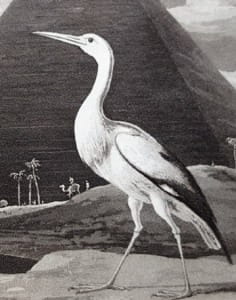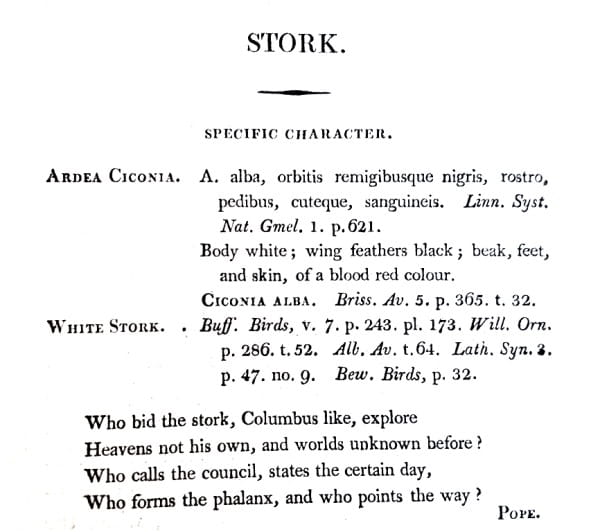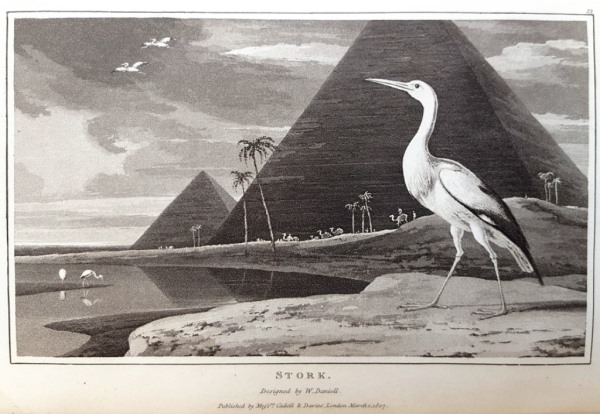Back from the Binders – William Woods’s Zoography; or, the beauties of nature displayed (1807)
22 Mar 2016
Thalia Knight

The contents of the box also included a completely different kind of book – William Wood’s three volume Zoography; or, the beauties of nature displayed (1807).
William Wood FRS, FLS (1774-1857) originally trained as a surgeon at St Bartholomew’s Hospital. He turned to the study of natural history with a particular interest in sea shells, for which he remains famous. Eventually, he became a leading natural history bookseller. His Zoography is important for the black and white aquatints by William Daniell (1769-1837). The subjects are renowned for their realism and are placed against exotic scenery reflecting their origin, for example the stork is pictured in front of a view of the pyramids in Egypt with a camel train in the distance.
William Daniell, who was one of the most notable English landscape artists of his day, is now most famous for a fabulous six-part work on India called Oriental Scenery, which he produced with his uncle, the landscape artist Thomas Daniell (1749-1840). He must have been working this book while producing the plates for the Zoography as it was published between 1795 and 1808.

Thalia Knight, Director of Library & Surgical Information Services

